If you've invested in voile fabric, you'll want to preserve its delicate, sheer qualities through proper washing techniques. This lightweight textile requires specific care to maintain its ethereal drape and prevent damage to its fine weave structure. While voile isn't the most fragile fabric you'll encounter, it needs more attention than your everyday cottons. Let's explore the essential steps to keep your voile pieces looking crisp and beautiful for years to come.
Key Takeaways
- Always check the care label first and use lukewarm water (max 30°C) with mild detergent for washing voile fabric.
- Hand wash by gently agitating in soapy water for 15 minutes, or use machine's delicate cycle with minimal agitation.
- Never wring or twist the fabric; instead, gently squeeze out excess water and roll in towels to remove moisture.
- Air dry by hanging in a well-ventilated area away from direct sunlight, avoiding tumble dryers completely.
- Iron while slightly damp using low to medium heat on the reverse side, with a pressing cloth for protection.
Preparing to Wash Voile Fabric
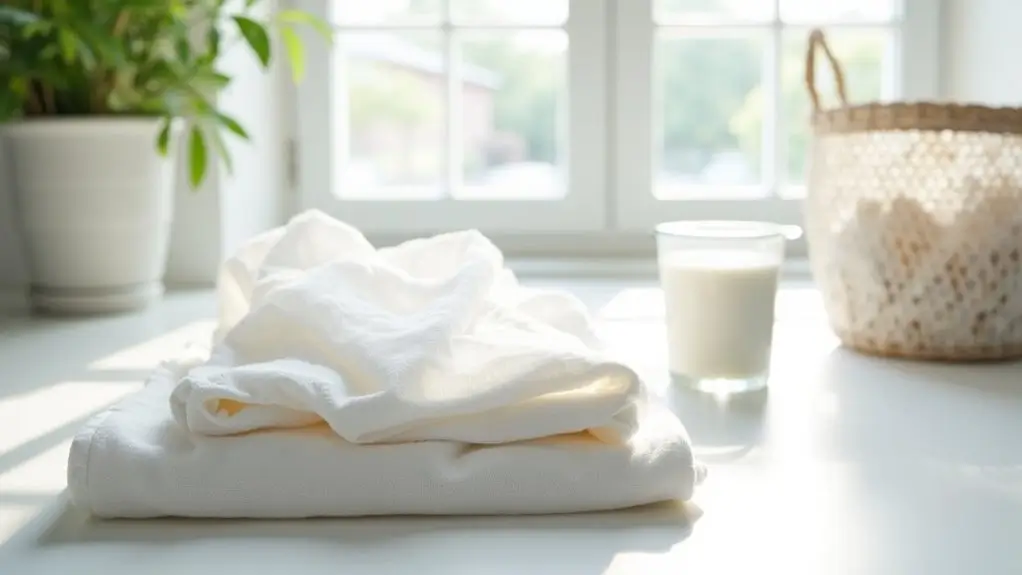
Before washing your voile fabric, carefully inspect the care label to determine the manufacturer's recommended cleaning method and temperature guidelines.
You'll need gentle detergent, lukewarm water, and a clean white cloth to test for colorfastness by dabbing a hidden corner of the fabric. Gather all necessary supplies, including a large basin or clean sink, mild soap specifically formulated for delicate fabrics, and a flat drying surface where you can lay the voile without stretching.
Checking Care Labels
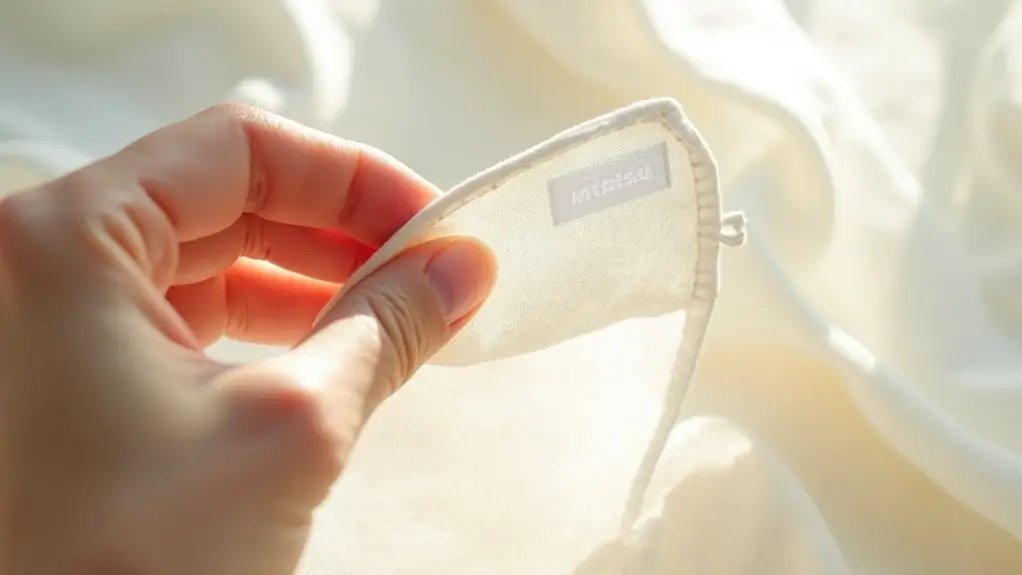
While preparing to wash your voile fabric, a careful inspection of the care label provides essential guidance for proper cleaning methods.
Check for specific temperature recommendations, which shouldn't exceed 30°C for most voile fabrics. You'll want to note whether hand-washing is required, particularly for pieces with embellishments or special finishes. The label will indicate suitable detergent types and whether your voile is polyester-based, which affects its durability during washing.
Pay attention to any warnings about stain treatments or specific cleaning restrictions. These details ensure you'll preserve your voile's quality during the cleaning process.
Gathering Supplies
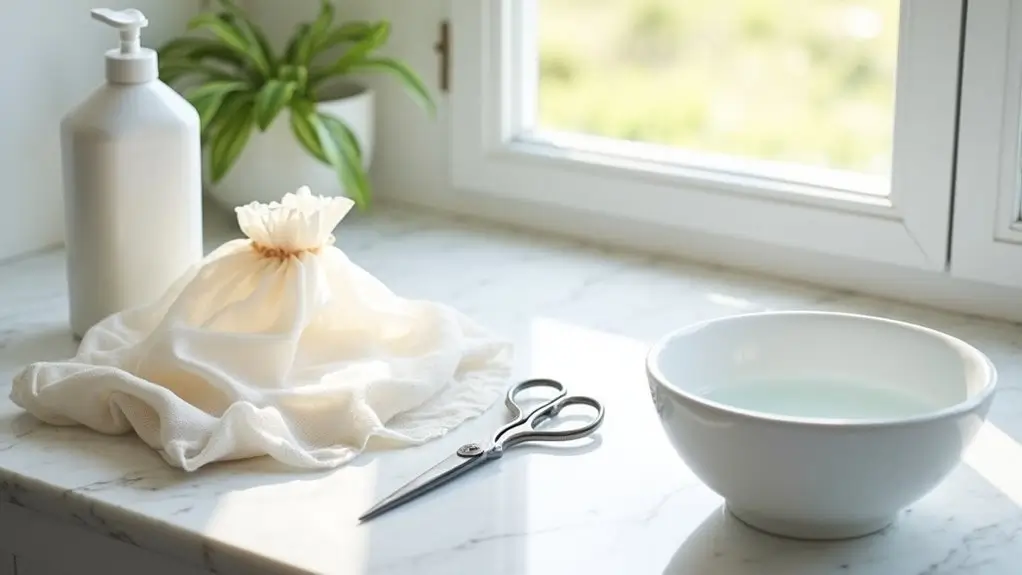
Successful voile fabric care begins with assembling the right cleaning supplies. Before washing your delicate voile, you'll need to gather specific items to ensure proper cleaning without damage.
- A mild detergent or specialized fabric cleaner designed for delicate materials
- A protective laundry net if you're using machine wash
- Clean, white towels for the drying process
- A large sink or washing container for hand washing
Check that your water temperature stays between 30-40°C to prevent shrinkage. Remove any decorative elements before washing, and ensure you have enough space to lay the fabric flat while drying.
Testing for Colorfastness
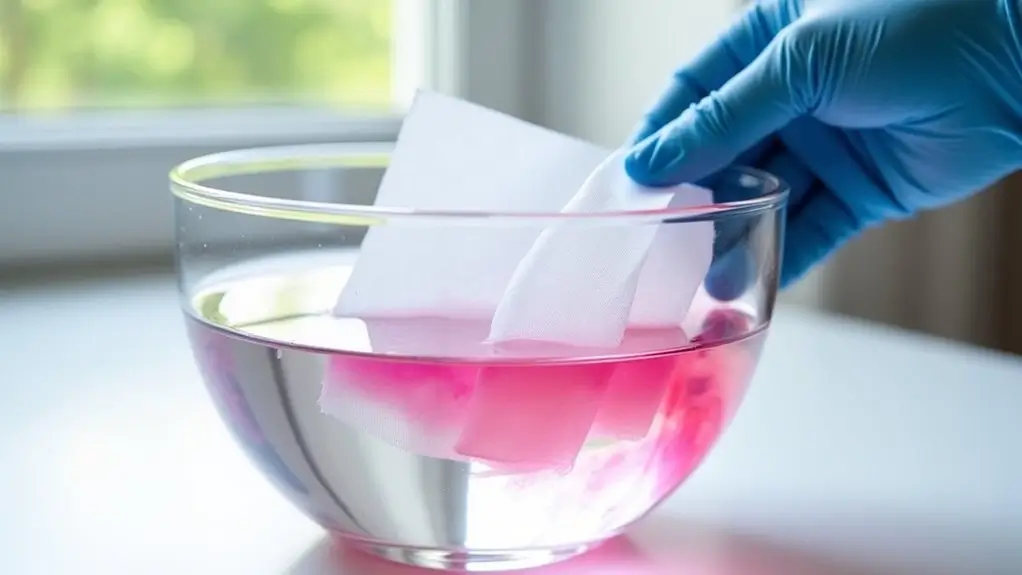
Testing your voile fabric's colorfastness stands as a critical first step that can prevent permanent damage during the washing process.
You'll need to perform two essential tests in a well-ventilated area. First, dampen an inconspicuous section of your delicate voile and blot it with a white cloth to check for color transfer. Next, apply a small amount of mild detergent to another hidden area, rinse, and observe any dye bleeding.
If either test shows color transfer, you'll need to take extra precautions while washing or consider professional cleaning to maintain your fabric's integrity.
Washing Techniques for Voile Fabric
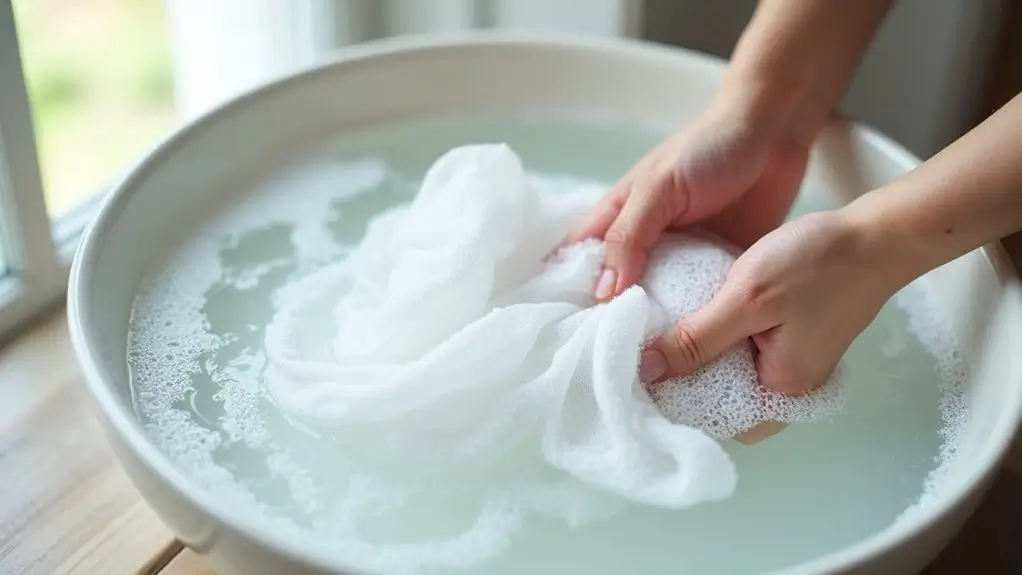
You'll find two primary methods for washing voile fabric: hand washing or machine washing.
For hand washing, gently agitate the fabric in warm, soapy water for 15 minutes while maintaining water temperatures below 30 degrees Celsius to prevent damage. If you're using a washing machine, select the delicate cycle and use minimal agitation to protect the fabric's delicate weave structure.
Hand Washing
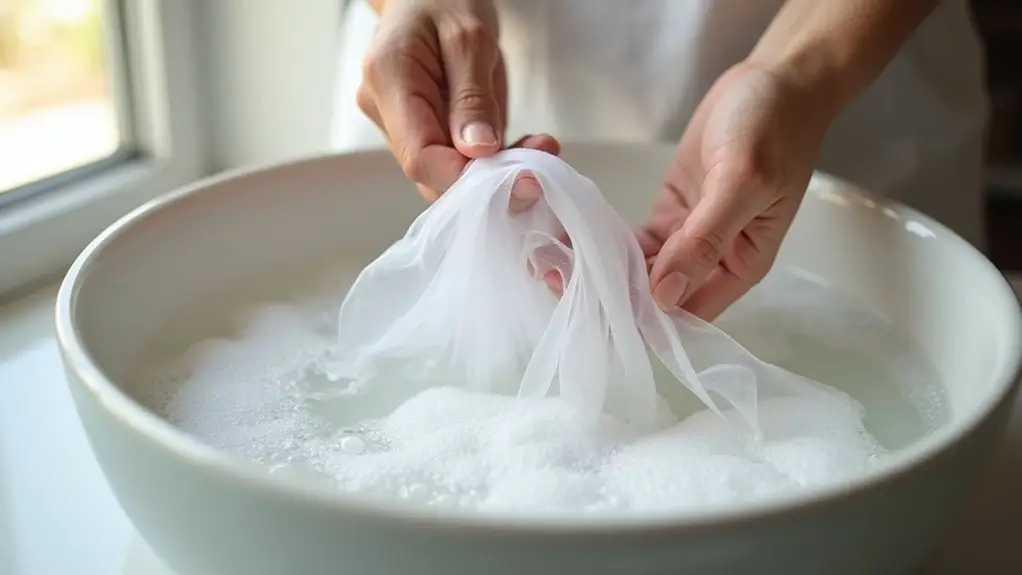
When washing voile fabric by hand, begin by filling a clean sink or basin with lukewarm water and adding a few drops of mild liquid dish soap.
To properly hand wash your voile fabrics, follow these essential steps:
- Submerge the fabric in the soapy water and let it soak for 15 minutes to loosen dirt and stains.
- Gently swirl the fabric through the water, avoiding any twisting or wringing motions that could damage the delicate fibers.
- Rinse thoroughly with clean water until all soap residue is removed.
- Squeeze out excess water carefully, then air dry by laying flat or hanging to maintain the fabric's integrity.
Machine Washing
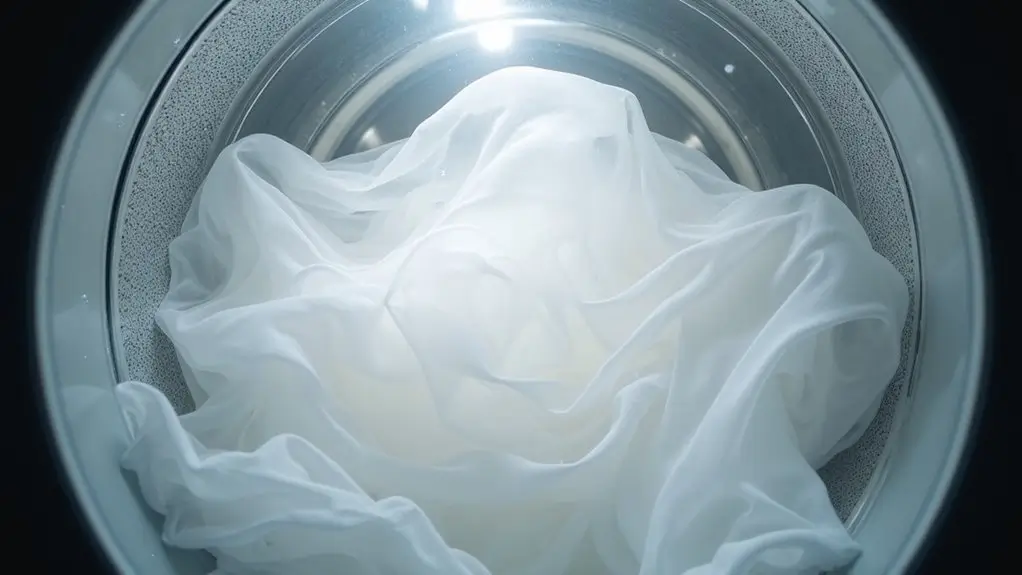
While hand washing offers precise control, machine washing voile fabric can be equally effective with the right precautions.
Begin by soaking your voile in warm water (max 40°C) for an hour to loosen dirt. Select a mild detergent specifically formulated for delicate fabrics, and use your washing machine's gentle cycle.
Don't overcrowd the machine - your voile needs space to move freely without tearing.
Ensure thorough rinsing until the water runs clear to remove all soap residue.
Skip the dryer and hang your voile to air dry naturally, preventing fiber damage and maintaining the fabric's delicate structure.
Drying Voile Fabric
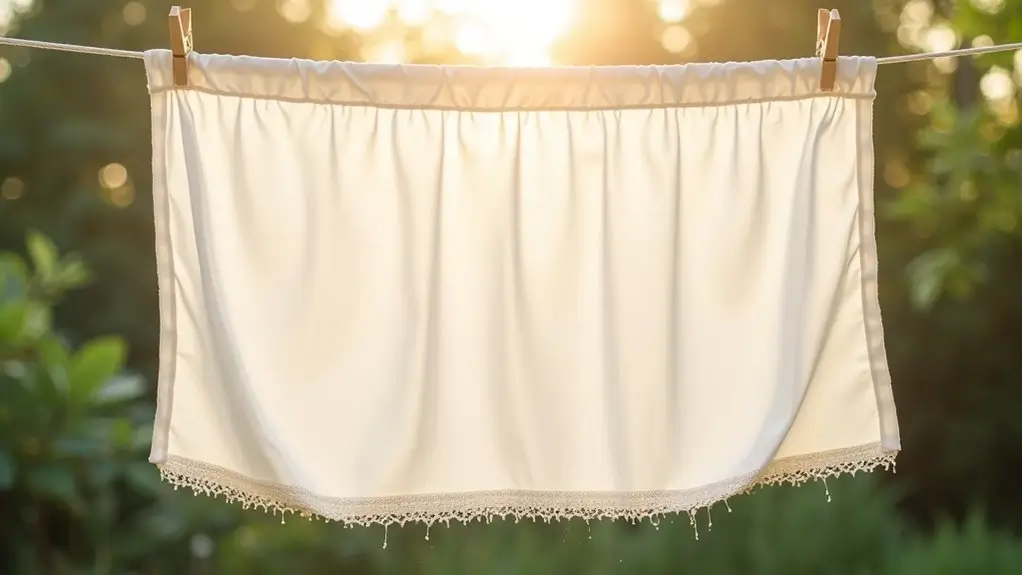
When drying voile fabric, you'll need to avoid tumble dryers entirely as the heat and agitation can permanently damage the material's delicate structure.
You should air-dry your voile by first rolling it gently in clean, thick towels to remove excess moisture without wringing or twisting.
Once you've removed the initial moisture, hang the voile in a well-ventilated area, ensuring it's positioned straight to prevent sagging and maintain its original shape while drying completely.
Air Drying
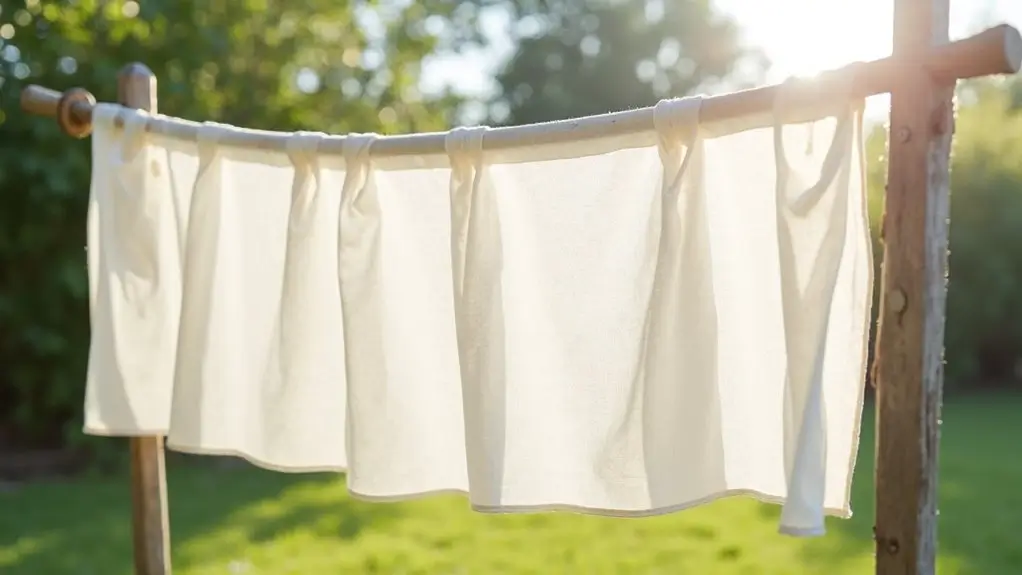
After completing the washing process, properly air drying your voile fabric is crucial to maintain its delicate weave and prevent damage.
Follow these simple steps for optimal results:
- Gently squeeze excess water from your voile, avoiding any twisting or wringing that could compromise the fabric's structure.
- Hang your curtains on a rod or line in a shaded area to prevent sun damage and color fading.
- If hanging isn't possible, lay the fabric flat on a clean towel in a well-ventilated space.
- Before the fabric completely dries, give it a gentle shake to minimize wrinkles and maintain its sleek appearance.
Remember to avoid direct sunlight and heat sources during the air drying process.
Using a Dryer
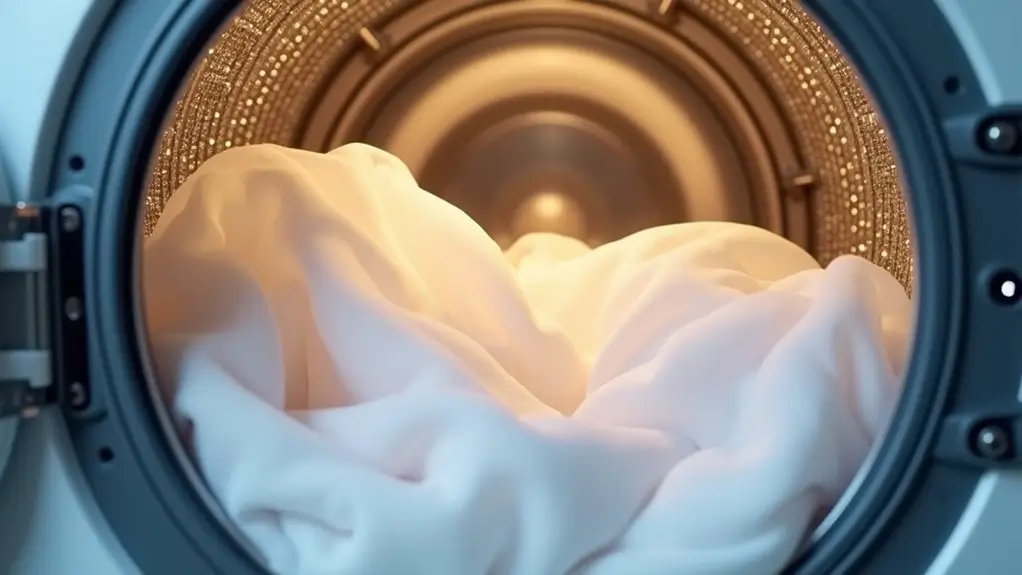
Using a dryer is strongly discouraged for voile fabric due to its delicate composition and susceptibility to heat damage. The high temperatures from tumble drying can cause irreversible shrinkage and weaken the fabric's fibers, compromising its delicate structure.
Instead, you'll want to preserve your voile by gently squeezing out excess water after washing, being careful not to wring or twist the material.
Hang the fabric on a line or rod away from direct sunlight, allowing it to drip dry naturally. Place towels beneath hanging curtains to catch any moisture and protect your floors during the drying process.
Ironing and Storing Voile Fabric
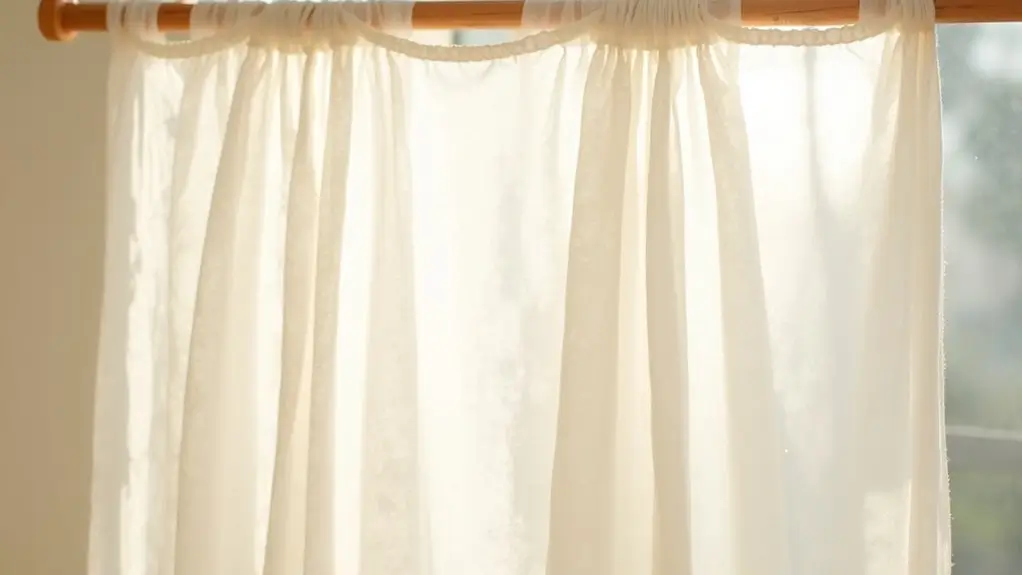
You'll need to iron your voile fabric while it's slightly damp, using a pressing cloth and maintaining a low to medium heat setting to prevent shine marks or burns.
For optimal storage, either fold or roll your voile material and place it in a cool, dry space away from direct sunlight to maintain its texture and prevent fading.
If hanging is your preferred storage method, select wide padded hangers to minimize creasing and preserve the fabric's natural drape.
Ironing Tips
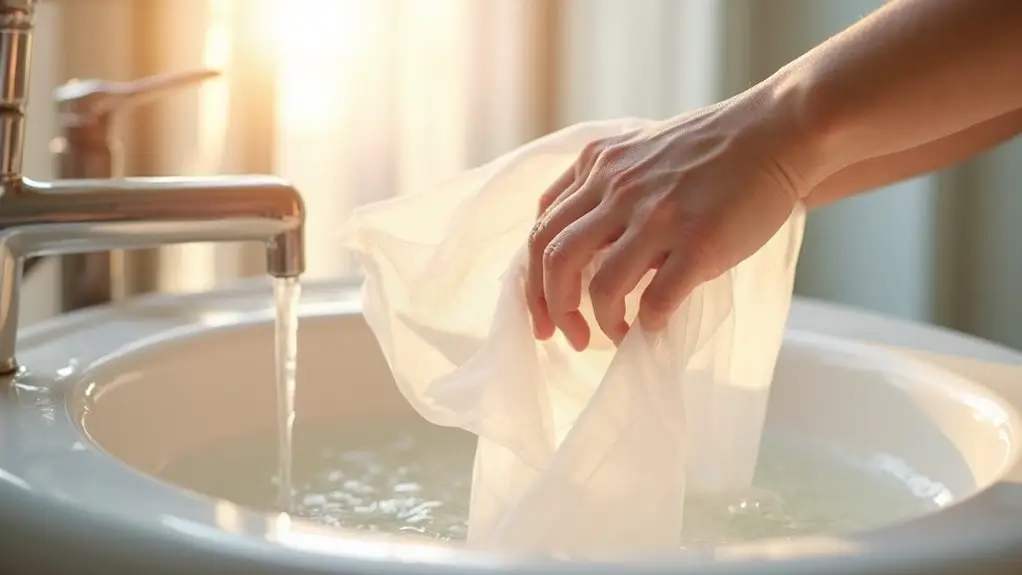
For optimal results when ironing voile fabric, set your iron to a low heat setting and always place a pressing cloth between the iron and the delicate material. This protective barrier prevents scorching and maintains the fabric's delicate sheen.
Follow these essential ironing techniques for voile:
- Iron while the fabric is slightly damp to effectively remove wrinkles
- Work on the reverse side to protect the fabric's surface finish
- Apply gentle, steady pressure with smooth, continuous movements
- Test the iron's heat on a small, inconspicuous area first
Remember to move the iron steadily to prevent heat concentration in any single spot, which could damage your voile's delicate fibers.
Proper Storage

After properly ironing your voile fabric, appropriate storage methods will preserve its pristine condition.
Store your voile by rolling it carefully rather than folding to prevent unwanted creases. Place a layer of cotton cloth or tissue paper between the voile layers to minimize static buildup and protect against snags.
Choose a cool, dry storage location for your fabric to maintain its quality.
You'll want to check your stored voile periodically for any signs of moisture or pest activity.
This proactive care ensures your fabric remains in excellent condition until its next use while protecting your investment in this delicate material.
Conclusion
Proper care of your voile fabric isn't complicated when you follow these precise washing guidelines. Start with temperature-appropriate water and mild detergent, choose between gentle hand-washing or a delicate machine cycle, and avoid harsh agitation. After thorough rinsing, roll the fabric in clean towels to remove excess moisture, then air dry away from direct sunlight. Iron while slightly damp for optimal results, and store in a clean, dry space.


0 comments